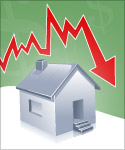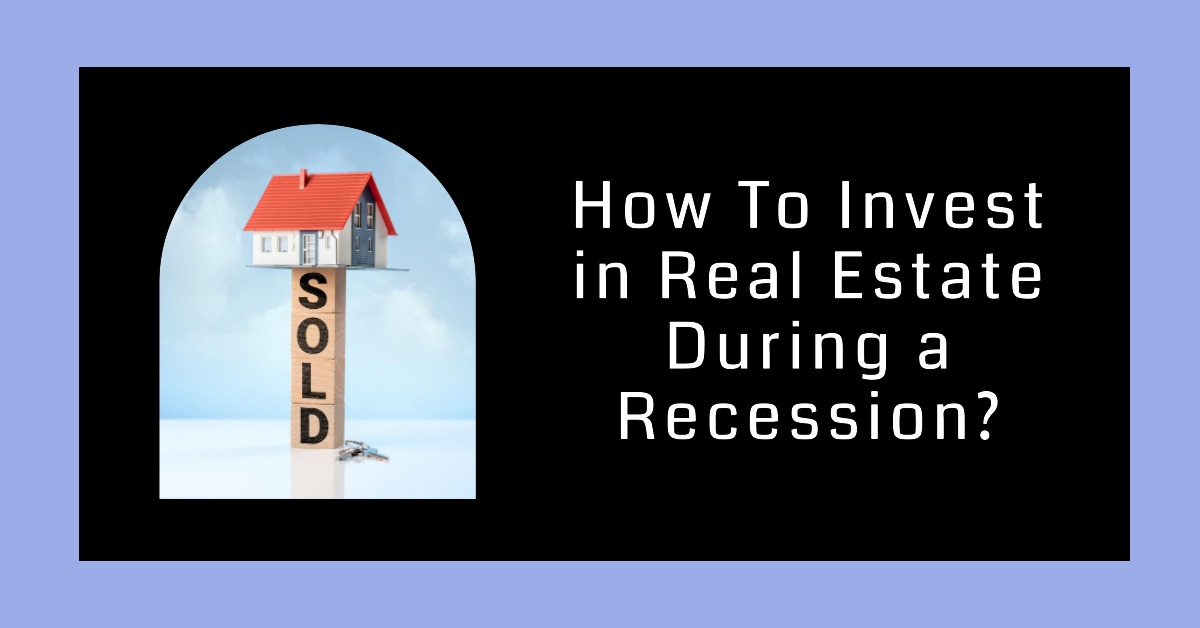Ever wonder what the smart money on Wall Street is thinking about the future of our economy? Well, here's a headline that's got my attention: Goldman Sachs forecasts three rate cuts from the Federal Reserve in 2025. That's right, one of the biggest names in finance is predicting that the folks in charge of keeping our economy on track will be lowering interest rates not once, not twice, but three times next year.
This move, if it happens, would mean a total reduction of 0.75 percentage points in the federal funds rate. Now, this isn't just a random guess; it's a prediction rooted in some pretty significant economic factors, particularly the expected fallout from President Trump's recently implemented tariffs. While the Fed itself is currently projecting only two rate cuts, this difference in opinion signals a potentially bumpy road ahead and some crucial decisions for our financial future. Let's dig deeper into what this all means for you, me, and the wider economy.
Goldman Sachs Forecasts Three Fed Interest Rate Cuts in 2025
Understanding the Basics: Why Rate Cuts Matter
Before we get into the specifics of Goldman's forecast and its implications, let's quickly recap why these interest rate adjustments by the Federal Reserve are such a big deal. Think of the Fed's main job as keeping the economy humming along smoothly. They have a couple of key tools to do this, and one of the most powerful is the ability to influence borrowing costs through the federal funds rate.
- What is the federal funds rate? It's the target rate that banks charge each other for the overnight lending of reserves.
- How do rate cuts help? When the Fed cuts this rate, it becomes cheaper for banks to borrow money. These lower costs tend to trickle down to us in the form of lower interest rates on things like car loans, mortgages, and business loans. This can encourage people to spend more, and businesses to invest and hire, which can help to boost a slowing economy.
- Why would the Fed cut rates? Typically, the Fed cuts rates when they are worried about the economy slowing down too much or when inflation (the rate at which prices for goods and services increase) is too low.
So, when a major player like Goldman Sachs predicts multiple rate cuts, it suggests they see potential headwinds for the economy in the coming year.
The Current Economic Picture: A Bit of a Mixed Bag
As we sit here in the early part of 2025, the economic landscape feels a little like a seesaw. On one hand, we've seen some encouraging signs.
- Solid Growth: The economy actually grew at a decent pace in the last part of 2024, with a 2.4% increase in GDP. That's not bad at all and suggests the economy had some momentum heading into this year.
- Relatively Controlled Inflation: While inflation at 2.8% is still a bit above the Federal Reserve's ideal target of 2%, it has come down from earlier highs. Core inflation, which takes out some of the more volatile food and energy prices, is around 3.1%. This suggests that while prices are still rising, the pace has slowed somewhat.
- Low Unemployment: The job market has remained pretty strong, with unemployment rates staying relatively low.
However, there are definitely clouds on the horizon, and these are likely what's fueling Goldman Sachs' more dovish outlook.
- Trump's Tariffs: A Potential Game Changer: The big wild card right now is the set of tariffs that President Trump has recently put in place. These include significant tariffs on goods coming from some of our biggest trading partners, like 25% on imports from Canada and Mexico and 10% on goods from China. There's also talk of reciprocal tariffs down the line.
- Weakening Consumer Confidence: I've noticed that people seem a bit more uneasy about the future. The University of Michigan's survey of consumer sentiment, for example, showed a noticeable drop recently, with folks expressing concerns about rising prices. This makes sense, as tariffs often translate to higher costs for consumers.
The Tariff Trouble: Why Goldman Sachs is More Concerned
In my opinion, the tariffs are the key reason why Goldman Sachs is anticipating more aggressive action from the Fed compared to the Fed's own projections. Here's how I see these tariffs potentially shaking things up:
- Higher Prices for Everyday Goods: Think about it – when a hefty tax (that's essentially what a tariff is) is slapped on imported goods, those costs are often passed on to us, the consumers. This means we could see higher prices for everything from cars and electronics to building materials and even groceries if imported ingredients become more expensive. Goldman Sachs is likely factoring in a significant increase in consumer prices due to these tariffs. For example, the potential 10-20 cent increase per gallon of gas due to tariffs on Canadian crude oil is something that would hit everyone's wallet.
- Slower Economic Growth: Tariffs can also hurt businesses. They might face higher costs for imported components, making their products more expensive. This can lead to reduced sales, lower profits, and potentially even job losses. Furthermore, other countries might retaliate with their own tariffs on American goods, making it harder for U.S. companies to sell their products overseas. Goldman Sachs likely believes that these tariffs will significantly dampen economic growth in 2025, potentially even increasing the probability of a recession to 35%.
- Increased Uncertainty: Businesses and consumers don't like uncertainty. When the rules of trade are in flux due to tariffs, it can make it harder for businesses to plan for the future and for individuals to make big purchasing decisions. This can lead to a general slowdown in economic activity.
The Fed's Perspective: A More Cautious Approach
Now, let's look at why the Federal Reserve seems to be taking a more measured approach, currently projecting only two rate cuts in 2025. From what I can gather, they are likely balancing a few key factors:
- Still-Elevated Inflation: Even though inflation has come down, it's still above their 2% target. The Fed is very careful about letting inflation become entrenched, as it can be difficult to bring back down. They might want to see more concrete evidence that inflation is firmly under control before they start cutting rates aggressively.
- Current Economic Strength: Despite the concerns about tariffs, the economy has shown some resilience. The Fed might be waiting to see the actual impact of the tariffs on economic data before making significant moves. They might be thinking, “Let's wait and see how bad it really gets before we hit the panic button.”
- Avoiding Premature Action: The Fed knows that once they start cutting rates, it can be harder to reverse course if inflation suddenly picks up again. They might prefer to be more cautious and see how things play out before making significant policy changes. As Fed Chair Jerome Powell himself said, “It's really hard to know how this is going to work out,” highlighting the uncertainty surrounding the tariff impacts.
According to their March 2025 projections (the “dot plot”), the Fed expects the fed funds rate to come down by 0.50 percentage points in 2025, implying two 0.25 percentage point cuts. They also anticipate that real GDP growth will slow to 1.7% for the year.
The Discrepancy: Who's Right and What Does it Mean?
The difference between Goldman Sachs' prediction of three rate cuts and the Fed's projection of two highlights the significant uncertainty surrounding the economic outlook for 2025. So, who is more likely to be right?
In my opinion, both sides have valid points. Goldman Sachs is likely placing a greater weight on the potential negative impacts of the tariffs on growth and inflation. They might see a scenario where the tariffs lead to a more significant economic slowdown, forcing the Fed to act more aggressively to stimulate the economy. Their forecast of rate cuts in July, September, and November suggests they anticipate a more immediate and pronounced negative impact from the tariffs. They've even downgraded their GDP growth forecast to 1.5% from 2.0% due to these concerns.
The Fed, on the other hand, seems to be taking a more data-dependent approach. They might want to see concrete evidence of a significant economic slowdown or a more pronounced drop in inflation before they deviate from their current plan of two rate cuts. They are likely trying to balance the risks of slowing growth against the risk of allowing inflation to remain too high.
The fact that there's such a notable difference in opinion from a major financial institution like Goldman Sachs underscores the volatility and risks that investors need to be aware of. It suggests that the economic path forward is far from certain.
What This Means for You and Your Money
So, how does all of this potential back-and-forth on interest rates affect your everyday life and your investments? Here are a few things to keep in mind:
- Borrowing Costs: If the Fed does end up cutting rates more aggressively (closer to Goldman's forecast), you could see lower interest rates on things like mortgages, car loans, and personal loans. This could make it cheaper to borrow money for big purchases. However, it's important to remember that other factors besides the federal funds rate also influence these rates.
- Savings and Investments: Lower interest rates generally mean lower returns on savings accounts and some fixed-income investments like bonds. On the other hand, lower rates can sometimes boost the stock market as they make borrowing cheaper for businesses and can make bonds less attractive relative to stocks. However, the uncertainty surrounding the reasons for the rate cuts (like a potential economic slowdown due to tariffs) can also create volatility in the stock market. We've already seen some market jitters in response to tariff-related news.
- Inflation and Purchasing Power: As mentioned earlier, tariffs can lead to higher prices, which erodes your purchasing power. Even if the Fed cuts rates, if prices are rising faster than your wages, you'll still feel the pinch. It's a tricky balancing act.
- Job Market: A significant economic slowdown, potentially exacerbated by tariffs, could lead to a weaker job market. If Goldman Sachs' more pessimistic outlook proves correct, we could see higher unemployment rates down the line.
Navigating the Uncertainty: My Thoughts and Advice
As someone who keeps a close eye on these economic developments, I think the next year or so is going to be interesting, to say the least. The interplay between the tariffs, inflation, and the Federal Reserve's response is going to be crucial.
My personal take is that Goldman Sachs' concerns about the tariffs are valid. Historically, tariffs have often led to higher prices and disruptions in trade, and there's no reason to believe this time will be significantly different. While the Fed's cautious approach is understandable given the current inflation levels, they might find themselves having to react more forcefully if the economic fallout from the tariffs is more severe than they currently anticipate.
Here's my advice for navigating this uncertain environment:
- Stay Informed: Keep an eye on economic news and data, particularly reports on inflation, GDP growth, and consumer sentiment. Pay attention to what the Fed and major financial institutions like Goldman Sachs are saying.
- Review Your Finances: Take a look at your personal financial situation. Are you heavily reliant on borrowing? If so, consider how potential interest rate changes might affect you. Are you concerned about rising prices? Think about ways to budget and potentially reduce your expenses.
- Diversify Your Investments: If you have investments, make sure your portfolio is well-diversified across different asset classes. This can help to cushion the impact of market volatility.
- Don't Panic: It's easy to get caught up in the day-to-day market swings, but try to maintain a long-term perspective. Economic cycles are normal, and there will always be periods of uncertainty.
Ultimately, the future is uncertain, and economic forecasts are just that – forecasts. However, the differing views of the Federal Reserve and a major player like Goldman Sachs serve as a reminder that there are significant risks and uncertainties in the current economic environment. Keeping a close eye on developments and being prepared for different scenarios is always a wise approach.
What It Means for Investors?
Three interest rate cuts in 2025—a major shift that could impact real estate and investment opportunities.
Lower rates mean cheaper financing and greater affordability for real estate investors. Take advantage of high-growth markets before demand surges!
Speak with our expert investment counselors (No Obligation):
(800) 611-3060
Read More:
- Goldman Sachs Significantly Raises Recession Probability by 35%
- 2008 Crash Forecaster Warns of DOGE Triggering Economic Downturn
- Stock Market Predictions 2025: Will the Bull Run Continue?
- Stock Market Crash: Nasdaq 100 Tanks 3.5% Amid AI Concerns
- Stock Market Crash Prediction With Huge Discounts on Bitcoin, Gold, Houses
- S&P 500 Forecast for the Next Year: What to Expect in 2025?
- Stock Market Predictions for the Next 5 Years
- Billionaire Warns of Stock Market Crash If Harris Wins Elections
- Stock Market is Predicted to Surge Regardless of the Election Outcome
- Echoes of 1987: Is Today’s Stock Market Crash Leading to a Recession?
- Is the Bull Market Over? What History Says About the Stock Market Crash
- Wall Street Bear Predicts a Historic Stock Market Crash Like 1929
- Economist Predicts Stock Market Crash Worse Than 2008 Crisis
- Stock Market Forecast Next 6 Months
- Next Stock Market Crash Prediction: Is a Crash Coming Soon?
- Stock Market Crash: 30% Correction Predicted by Top Forecaster




